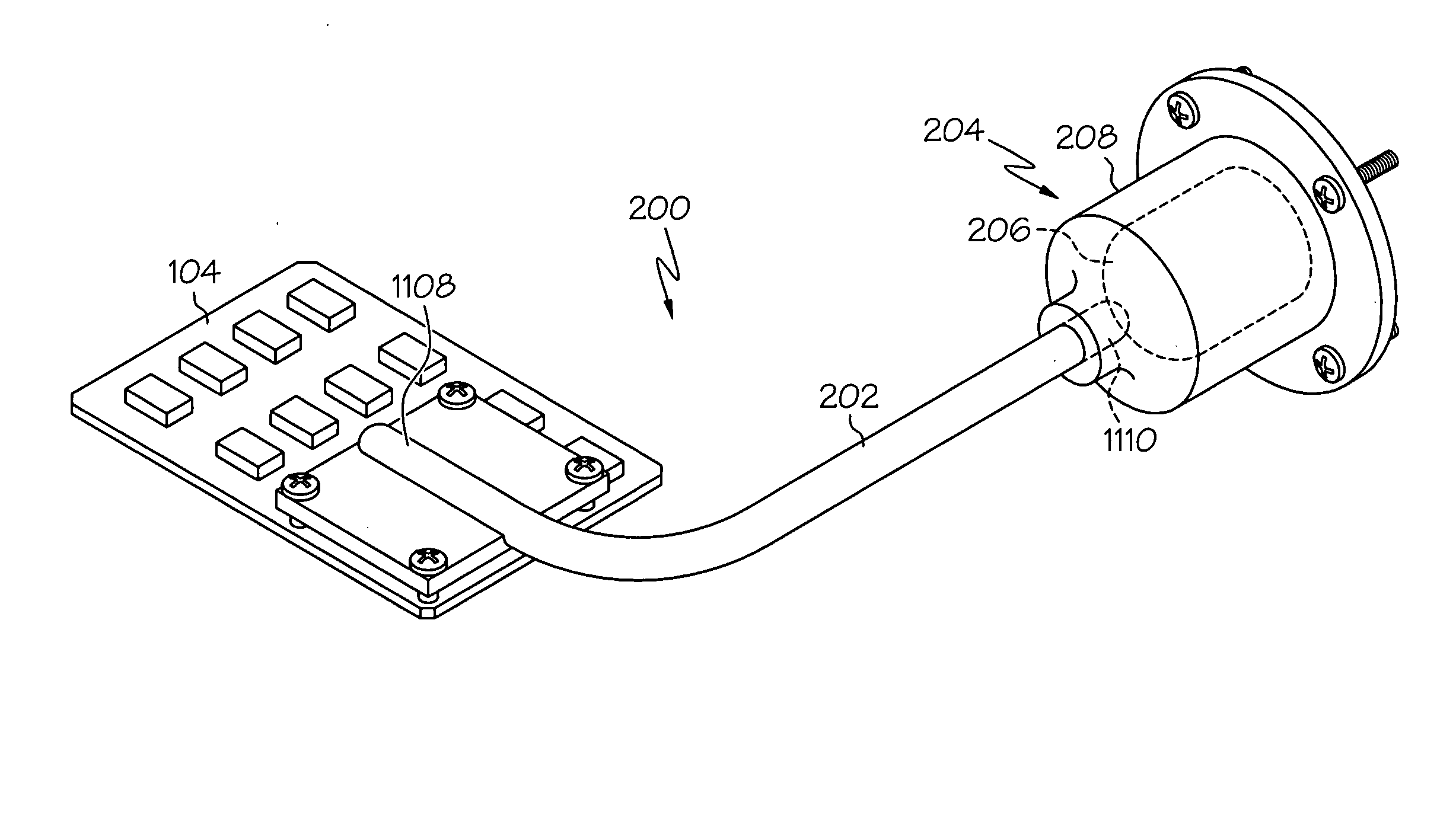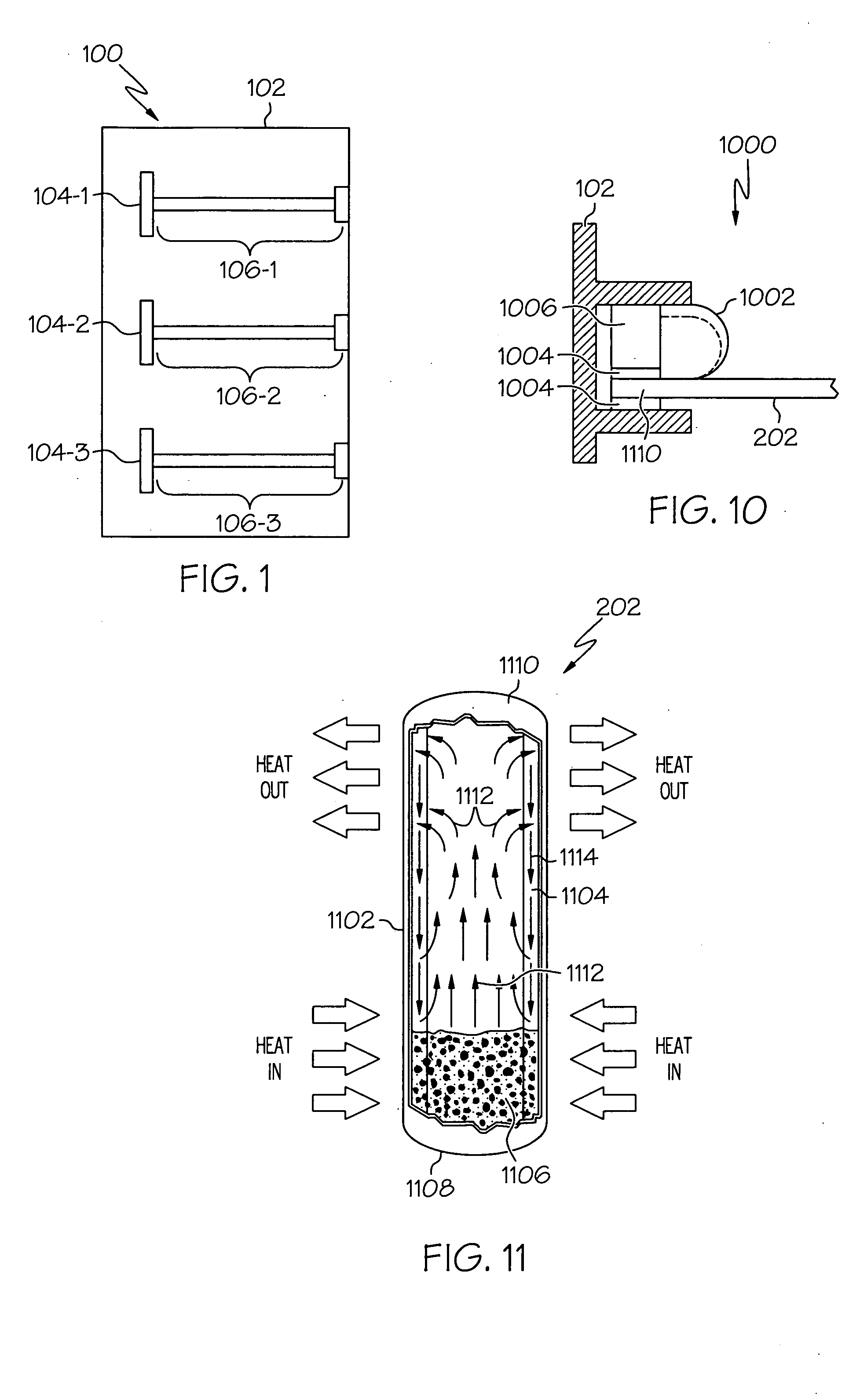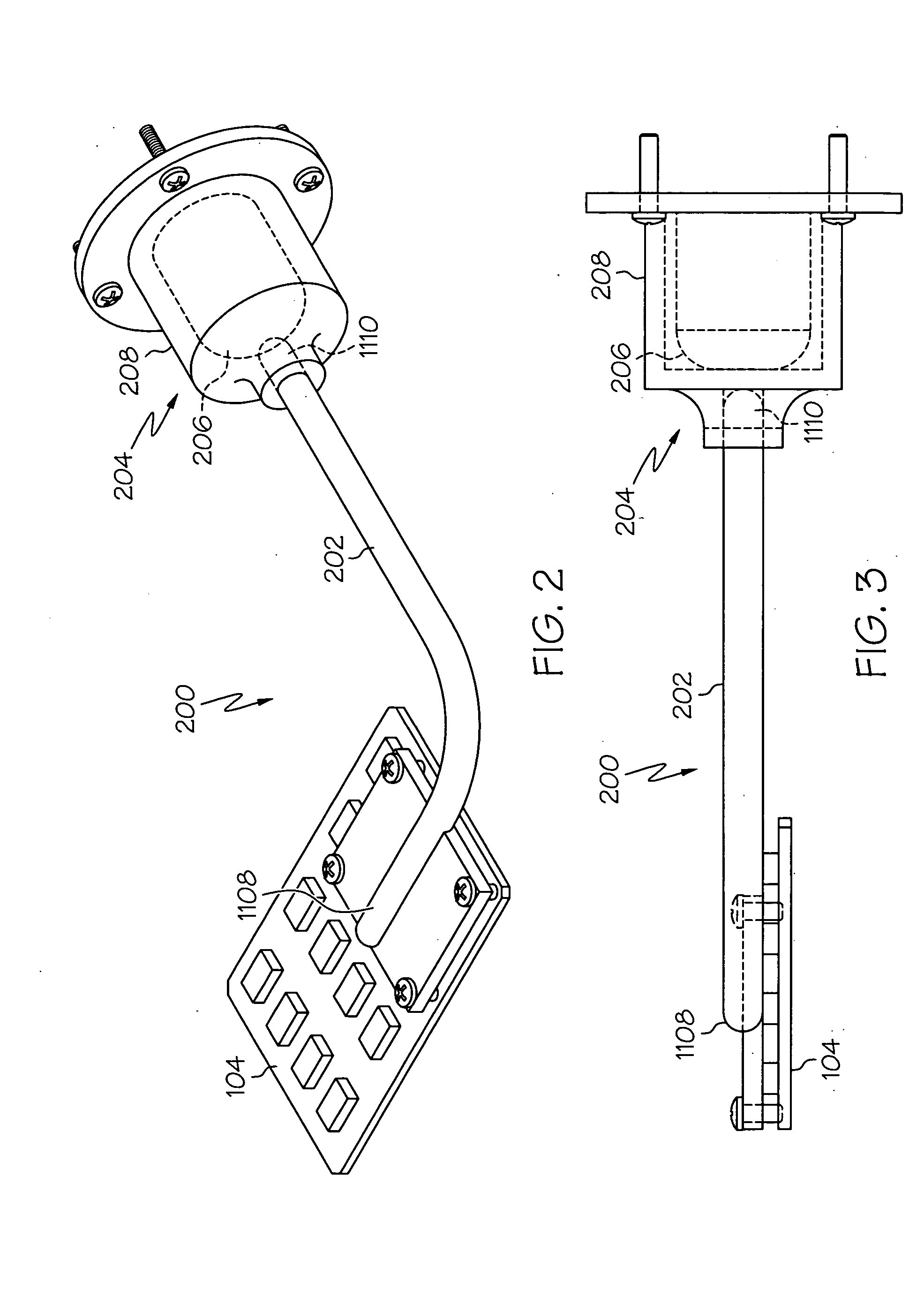Passive thermal switch
a passive thermal switch and electronic system technology, applied in the direction of cooling/ventilation/heating modification, semiconductor device details, semiconductor/solid-state device details, etc., can solve the problems of high environmental impact, low temperature of electronic components, and many electronic systems implemented in aerospace environments, so as to reduce heat dissipation from the system, control the temperature of electronic system components, and reduce the effect of heat dissipation
- Summary
- Abstract
- Description
- Claims
- Application Information
AI Technical Summary
Benefits of technology
Problems solved by technology
Method used
Image
Examples
embodiment 600
[0032] Yet another passive thermal switch embodiment 600 is shown in FIGS. 6 and 7, in which like reference numerals refer to like parts of the previous embodiments, and will now be described. This passive thermal switch 400 is similar to the previously described embodiments, in that the switch 204 has first 206 and second 208 contacts, the heat pipe evaporator end 1108 is coupled to one or more of the circuit components 104, and the heat pipe condenser end 1110 is coupled to the switch first contact 206. However, as will now be described, the configuration of the first 206 and second 208 switch contacts is significantly different than the two previous embodiments.
[0033] In the switch 204 of this third embodiment, the first 206 and second 208 contacts are disposed adjacent one another. However, neither switch contact 206, 208 at least partially surrounds the other switch contact 208, 206. Instead, the first 206 and second 208 contacts are each preferably configured as a plate. The f...
third embodiment
[0034] With the passive thermal switch 600 of FIGS. 6 and 7, when the circuit components 104 are at or below a predetermined temperature, such as during a cold startup, the switch 204 is configured such that the first 206 and second 208 switch contacts are thermally decoupled from one another. As such, the heat pipe 202 is thermally decoupled from the heat sink, and the circuit components 104 will begin heating up. As the circuit components 104 heat up, heat is transferred to the heat pipe 202, and from the heat pipe 202 to the first contact 206 and the tendon 602. This, in turn, causes the tendon 602 to heat up and begin changing its shape in a manner that the tendon 602 begins contracting, and moving the first contact 206 toward the second contact 208. When the circuit components 104 reach the normal operating range, the tendon 602 preferably reaches a temperature at which its shape is changed sufficiently to cause it to move the first contact 206 into engagement with, and thereby...
fourth embodiment
[0036] The switch 204 in this fourth embodiment additionally includes an expansion column 802 that is coupled between the first contact 206 and another structure such as, for example, the chassis 102. The expansion column 802 is preferably constructed, at least in part, of a shape memory metal or metal alloy. As with the other embodiment, the first 206 and second 208 contacts may also be constructed, at least in part, of either a shape memory metal or metal alloy or a non-shape memory metal or metal alloy having good heat transfer characteristics. In a particular preferred embodiment, the first 206 and second 208 contacts are constructed of metal having good heat transfer characteristics such as, for example, aluminum or copper.
[0037] With the passive thermal switch 800 of FIGS. 8 and 9, when the circuit components 104 are at or below a predetermined temperature, such as during a cold startup, the switch 204 is configured such that the first 206 and second 208 switch contacts are th...
PUM
 Login to View More
Login to View More Abstract
Description
Claims
Application Information
 Login to View More
Login to View More - R&D
- Intellectual Property
- Life Sciences
- Materials
- Tech Scout
- Unparalleled Data Quality
- Higher Quality Content
- 60% Fewer Hallucinations
Browse by: Latest US Patents, China's latest patents, Technical Efficacy Thesaurus, Application Domain, Technology Topic, Popular Technical Reports.
© 2025 PatSnap. All rights reserved.Legal|Privacy policy|Modern Slavery Act Transparency Statement|Sitemap|About US| Contact US: help@patsnap.com



